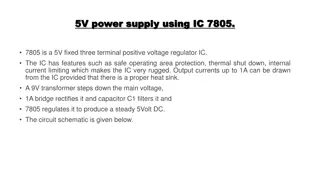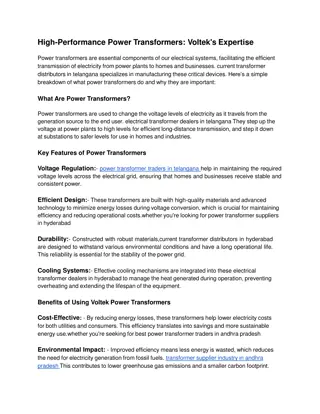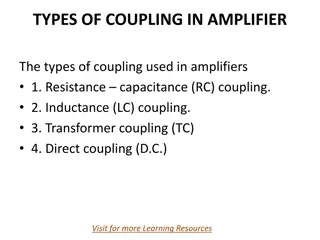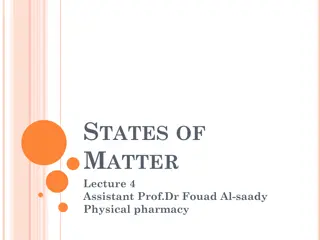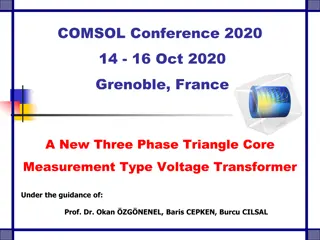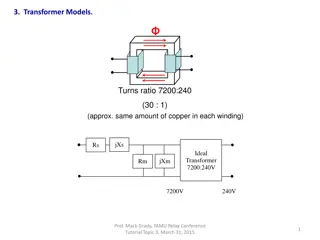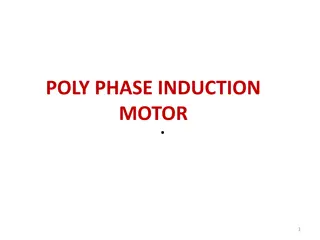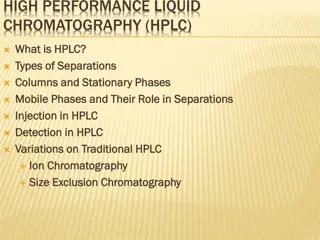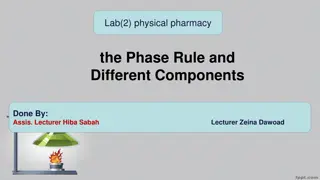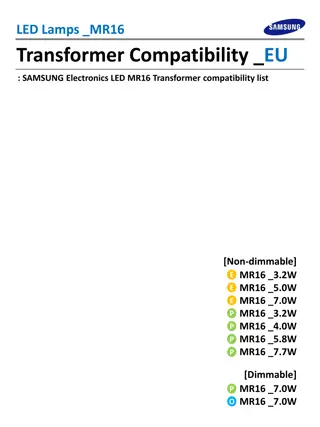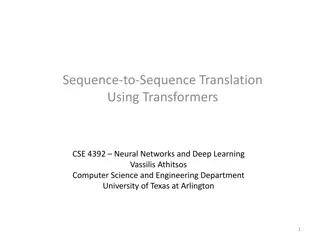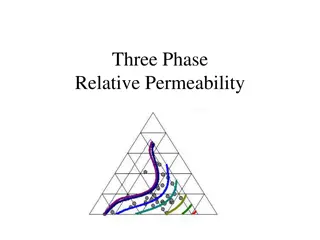
Efficiency and Space Savings: 3-Phase Transformer Advantages
Learn about the construction, advantages, and operation of 3-phase transformers over 1-phase transformers, including how they save space, reduce weight, cost less, and are more efficient. Explore the principal of operation and various connection methods used in three-phase transformers.
Download Presentation

Please find below an Image/Link to download the presentation.
The content on the website is provided AS IS for your information and personal use only. It may not be sold, licensed, or shared on other websites without obtaining consent from the author. If you encounter any issues during the download, it is possible that the publisher has removed the file from their server.
You are allowed to download the files provided on this website for personal or commercial use, subject to the condition that they are used lawfully. All files are the property of their respective owners.
The content on the website is provided AS IS for your information and personal use only. It may not be sold, licensed, or shared on other websites without obtaining consent from the author.
E N D
Presentation Transcript
3-Phase Transformer Construction, Principal, Working, Operation Advantages Over 1-Phase Transformer *Introduction *Advatages *Construction *Principal *Working
*Introduction *The generation of an electrical power is usually three phase and at higher voltages like 13.2 KV, 22 KV or some what higher, Similarly transmission of an electrical power is also at very high voltages like 110 KV, 132 KV, 400 KV. To step up the generated voltages for transmission purposes it is necessary to have three phase transformers.
*Advantages *Less space *Weight Less *Cost is Less *Transported easily *Core will be smaller size *More efficient *Structure, switchgear and installation of single three phase unit is simpler
*The three cores are arrange at 120 from each other. Only primary windings are shown on the cores for simplicity. *The primaries are connected to the three phase supply. *The three fluxes is also zero at any instant.
*Hence the centre leg does not carry any flux. *So if centre leg is removed, any two legs provide the return path for the current and hence the flux in the third leg. *This is the general principal used in the design of three phase core type transformers.
*Three Phase Transformer Connection *The primary and secondary winding of three phase transformers as three phase winding can be connected in different ways such as in star or in delta. With suitable connection the voltage can be raised or lowered. *In this section some commonly used connections for three phase transformers are discussed.
*Star-Star connection *Delta-Delta connection *Star-Delta connection *Delta-Star connection *Open Delta or V connection *Scott connection or T-T connection
*Parallel Operation of Three Phase Transformer *The transformers are connected in parallel when load on one of the transformers is more then it capacity *The reliability is increased with parallel operation than to have single larger unit.
*The Transformers connected in parallel must have same polarity so that the resultant voltage around the local loop is zero. With improper polarities there are chances of dead short circuit. *The relative phase displacements on the secondary sides of the three phase transformers to be connected in parallel must be zero. The transformers with same phase group can be connected in parallel
*As the phase shift between the secondary voltages of a star/delta and delta/star transformers is 30 , They cannot be connected in parallel. *But transformers with +30 and -30 phase shift can be connected in parallel by reversing phase sequence of one of them
*The voltage ratio of the two transformers must be same. This prevents no load circulating current when the transformers are in parallel on primary and secondary sides. *As the leakage impedance is less, with a small voltage difference no load circulating current is high resulting in large I2R losses.

